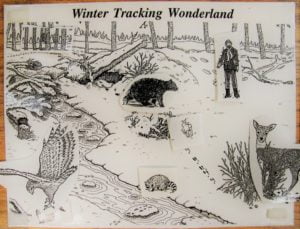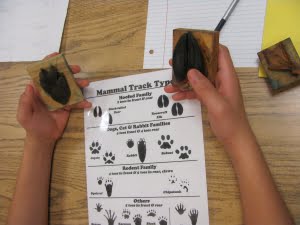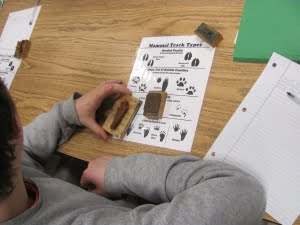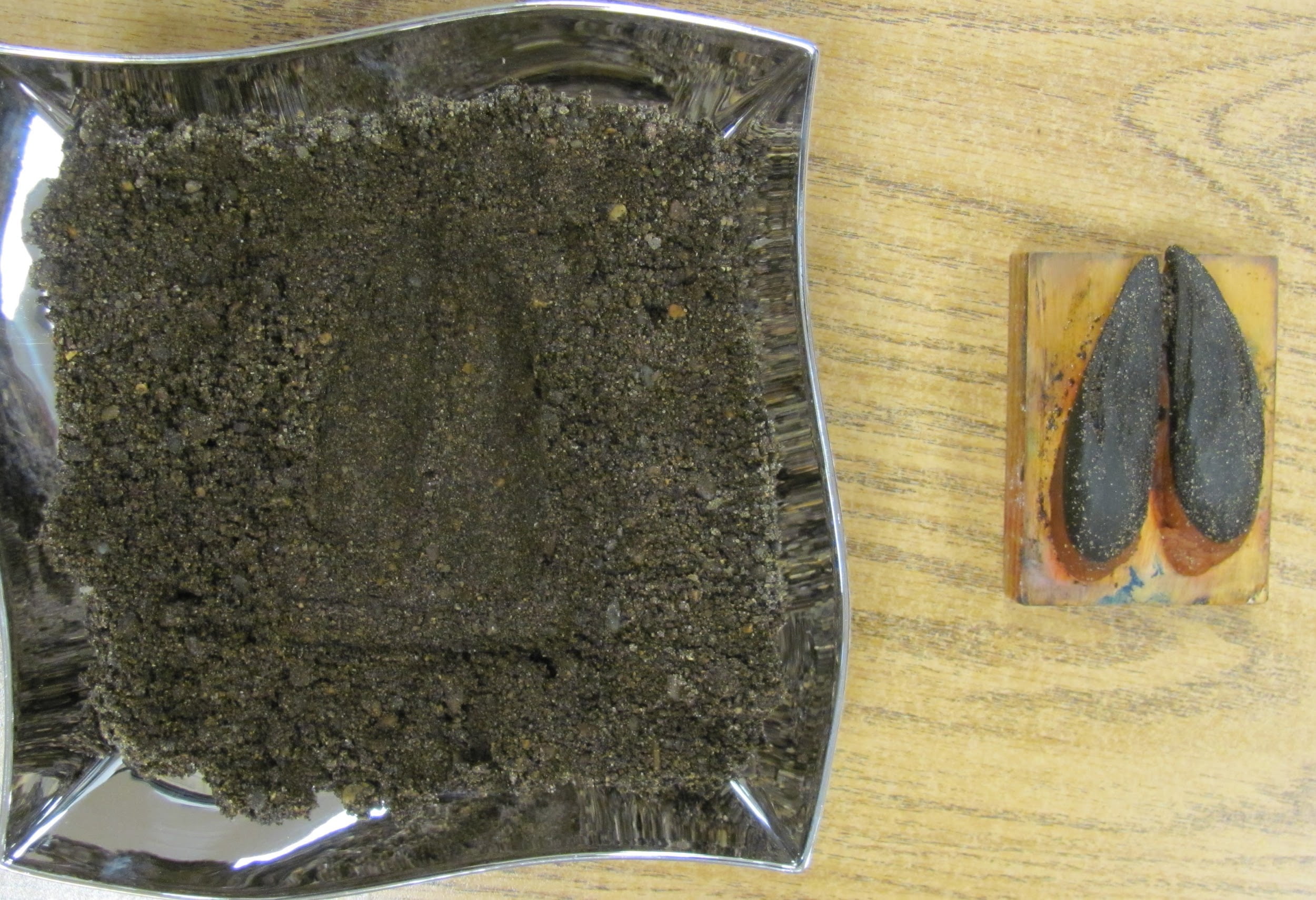Teaching Animal Tracking in Juvenile Detention
By Tyler Knapp
January 2019
How do you teach high school students about animal tracking if they are incarcerated, and can’t go out in nature? Well, you bring the tracks to them! On Wednesday January 9th, IAE Ecological Education Coordinator Tyler Knapp and Stacy Moore, Ecological Education Program Director, did just that at the Linn-Benton Juvenile Detention Center in Albany, Oregon. We brought a box full of rubber animal track casts, a bag of sand, plaster of paris, bowls, handouts and other supplies through several locked steel doors, and into the classroom within the cell block.
To start the lesson, Stacy asked the six students to write down all of the animal signs besides tracks that they could think of. How can you tell if an animal has been somewhere even if you don’t see it? Things that the students mentioned included: owl pellets under a tree, spider webs, bird poop on a car, the echolocation sounds of bats, nests, scratch marks on trees, holes in the ground, and leaves that have been chewed on.
Our first activity was called “Winter Tracking Wonderland,” and included a drawing of a snow covered forest with various animal tracks throughout it (including human). The students used cut out drawings of animals and had to place them on the matching tracks in the forest scene.



For our second activity, each student was given three rubber track casts and a “Mammal Track Types” hand out with track drawings divided into various animal families. They were asked to place the track casts in the corresponding animal families. Once they had made their guesses, they could check their answers by looking underneath the wooden base of the cast to see what animal the track came from.
For our final activity each student was given a bowl full of sand, the rubber track cast of their choice, and plaster of paris supplies. They used the cast to make a single track print in the sand. Then they each mixed plaster of paris powder with water in a bowl and poured it into the track they had made in the sand. We left the plaster of paris casts to dry, and they will be put on display in the classroom with the animals’ names listed on them for future learning.
It was rewarding to bring a nature lesson inside the walls of the Juvenile Detention Center, to youth who don’t have access to nature due to their incarceration. They were some of the most appreciative, well-behaved, and respectful students that I have ever worked with. Several of the students told us “thank you for coming in, we learned a lot and had great fun!” Institute for Applied Ecology greatly appreciates funding from the John Diehl Memorial Fund, which allows us to reach numerous students at Juvenile Detention and Oak Creek Youth Authority with lessons in science and ecology.



Restoration
Research
Education
Get Involved
Contact
Main Office:
4950 SW Hout Street
Corvallis, OR 97333-9598
541-753-3099
[email protected]
Southwest Office:
1202 Parkway Dr. Suite B
Santa Fe, NM 87507
(505) 490-4910
[email protected]
© 2024 Institute for Applied Ecology | Privacy Policy